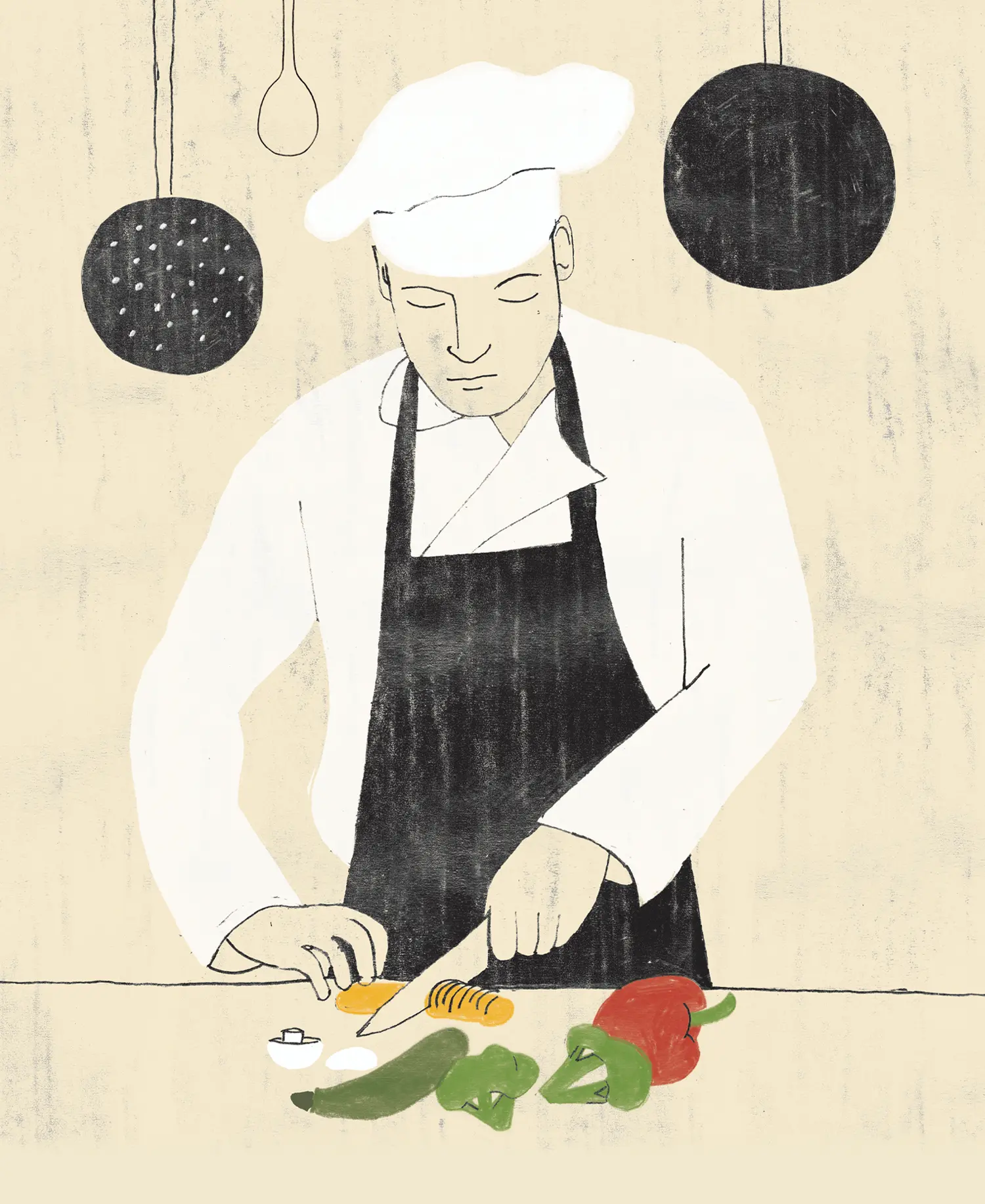Delicious Data
Checking in with UNH Dining
Good food, good news
Campus eateries earn high marks for sustainability
HoCo and Philly are climbing the charts: UNH became one of only two universities in the country to have all of its dining halls achieve a four-star rating from the Green Restaurant Association (GRA). Holloway Commons (HoCo) and Philbrook Dining Hall (Philly) earned the organization’s highest ranking available.
Each had previously held a three-star rating, but for the first time cleared the 300-point requirement necessary to attain four stars under the GRA evaluation, which focuses on environmental sustainability in a number of categories. UNH Catering and the Dairy Bar each earned three-star status, as well.
Holloway Commons and Philbrook Hall are the only four-star certified GRA restaurants in the state of New Hampshire.
Tom Kelly, chief sustainability officer and executive director of the UNH Sustainability Institute, called UNH Hospitality “a bright spot in our sustainability work for the last 25 years.

gallons of milk
lbs. of guacamole
eggs used (2022)
pizza doughs
gallons of marinara sauce


Oddest Dining Hall Request
Khachapuri
Khachapuri: A Georgian bread in the shape of a boat with melty cheese and egg yolks in the center. Explains Chef Todd Sweet, UNH Dining Services’ senior executive chef and assistant director of culinary services: “We welcome student feedback, and from our student dining committee, we heard from a student from the country of Georgia, a former Soviet republic. ‘There’s this dish that’s really, really good. It’s cheesy bread. Can you please try to make it a pizza?’ I said absolutely and then I did some research on it and it’s a very labor-intensive, handsy dish and the places that make it, that’s really their specialty. So I made it — cheese, yogurt, you put a couple of egg yolks in it near the end. And it’s really, really tasty,” says Sweet, who demonstrated it for an employee training one year — and that’s as far as it went. “It’s impossible to scale up to meet the demand for a dining hall — although I would still like to make that happen. It was delicious.”
Hits and misses
HIT: The most popular dining hall items are what you might expect: pizza, hamburgers and chicken tenders. Lots and lots of chicken tenders. “When we sell chicken tenders, we have to park one staff person in front of the deep fryers — and we have four deep fryers — for pretty much that entire meal period. They cannot stop frying except to filter the oil halfway through because they’ll just fall behind,” says Chef Todd Sweet.

“I think students were just confused about what exactly it was supposed to be,” Sweet recalls of the fall dinner event, which featured piadina stations, where students could choose meats, cheeses and greens like arugula and basil. “I’d been thinking about this for three or four years, how I was going to execute this. And when I finally rolled it out, it was crickets. No one came, and the people who did come were really unsure of it and just made a cold sandwich and looked at us awkwardly and left. We had a lot of leftovers that day. It was humbling.”
The Future of Food
UNH is home to a consortium of food-focused organizations looking to create a just and sustainable future, coordinated by UNH’s Sustainability Institute. One of those, Food Solutions New England (FSNE), is a regional, six-state network of people, organizations, businesses and other groups that unites the food system community around a shared set of values. Those values include democratic empowerment, racial equity and dignity for all, sustainability and trust. FSNE was recently part of a partnership of similar organizations regionally that called for New England to produce and consume 30 percent of its own food by 2030.
Learn more about FSNE and their vision for the future of food in New England: foodsolutionsne.org
Digging, planting, weeding and learning

Food from the program sometimes goes home with the students, but the majority of the produce is brought to UNH Dining Services for use. The course is made up of mostly sustainable agriculture and food systems majors, but is open to all students.
Aside from agriculture lessons, students also employ web design and social media skills to document their experiences, and they study small business management, restaurant trends, botany and small team dynamics.
Learn more: farmtoyounh.com